Features of dry cleaning of furniture: a review of methods and recommendations of specialists
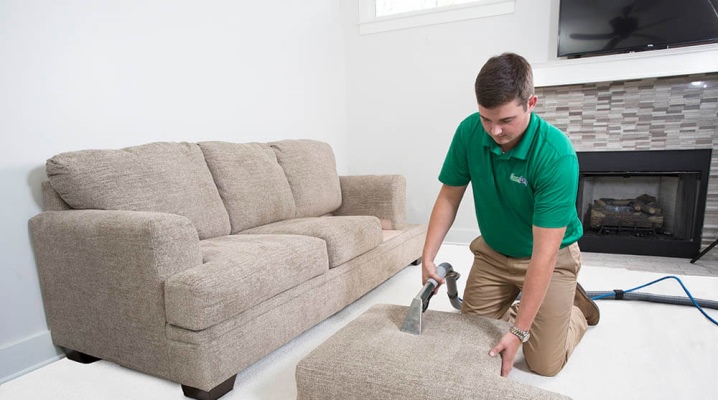
Each owner wants the upholstered furniture in his apartment to look beautiful and dignified, and also serve for many years. But to achieve this, you will have to make a lot of effort, because regardless of the type of upholstery, such furniture will need regular and proper cleaning. We will talk below about what funds will be needed for this and how to organize the process itself.
Views
Any type of furniture, be it a sofa, an armchair or a pouf, sooner or later gets dirty. These can be a wide variety of types of dirt, the most common being food, drink, cream and urine stains. The situation is especially aggravated in apartments with small children and pets, which can leave any kind of stain. In such cases, the owner has a choice: to use the services of a mobile company that will carry out professional cleaning, or to resort to cleaning the furniture on his own, at home.

Professional
On-site dry cleaning of furniture is the best choice for those who cannot or do not know how to properly clean the dirt.
Let's consider the advantages of such a solution:
- the cleaning company will be able to effectively and quickly clean any type of dirt;
- after cleaning, the furniture will look almost like new, even the most difficult stains will be removed;
- in addition to cleaning, specialists are able to remove an unpleasant odor, as well as disinfect furniture, relieving residents of pathogenic microorganisms.
However, there are a few downsides to home visit companies that need to be identified:
- if cleaning is needed urgently (for example, guests will come in the evening), then you may not have time to negotiate with the specialists;
- you will have to pay for dry cleaning services. The cost will depend on the qualifications of the master, equipment and cleaning agents used.
At home
Cleaning at home means removing stains yourself. The advantages of this solution:
- you can start cleaning at any time convenient for you, no need to wait;
- there is an opportunity to choose a good cleaning product that will not harm your health, and in which you will be completely sure;
- there is no need to spend money on the services of cleaning companies or professional firms.
Among the cons:
- you will have to find out in advance what kind of tool you need to clean the upholstery, otherwise you can easily ruin it;
- not all stains can really be removed on their own;
- you will have to spend time cleaning, and the result of your work will not always be satisfying, especially if you have not done this before.
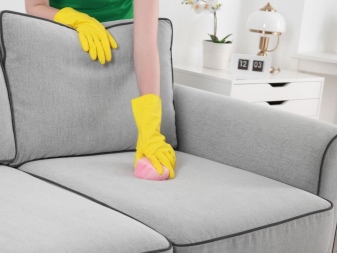
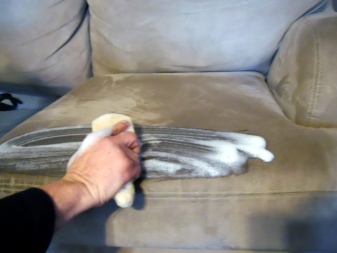
Cleaning types and tools required
Any cleaning of upholstered furniture begins with the purchase of the necessary equipment. It can be both everyday and professional. The first type is found in almost every home: these include an ordinary bucket, soft rags, a vacuum cleaner, brushes, detergents, steam generators.
Professional equipment is less common in everyday life, as it is used mainly by cleaning companies. Nevertheless, we will dwell on this issue in a little more detail.
Professional remedies include:
- dimensional washing vacuum cleaners;
- special hair dryers for drying upholstery;
- small electric brushes to remove dirt from even the most difficult places;
- extractor - a special vacuum cleaner that cleans the surface with foam.
All these products are quite expensive, if you rarely use them in everyday life, then the acquisition will not pay off. And it is not recommended to use them often, because along with excellent and quick cleaning, the upholstery of upholstered furniture will quickly wear out and become thinner.

Now that everything is more or less clear with the necessary tools, we will consider what types of cleaning are available to owners today.
Dry
Dry cleaning your sofa is a good option for regular cleaning and for minor dirt.
- The simplest solution is simply vacuum the sofa. This will help get rid of dust, hair, particles of animal hair. Some people also use a carpet beater, but this is not always justified. If the material of the upholstery is delicate, it can be easily damaged in this way.
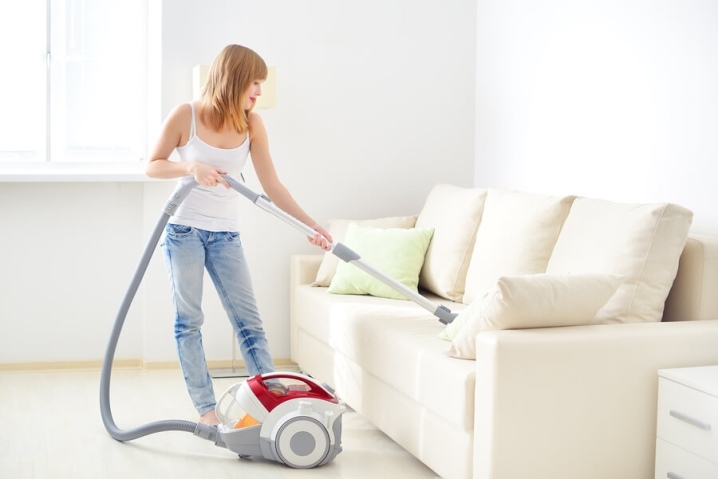
- The second dry cleaning option is the use of a special powder, also often used foam. Using a brush, the product is evenly distributed over the upholstery, then they wait for the required time (it is indicated in the instructions). After that, all that remains is to walk on the furniture with a vacuum cleaner.

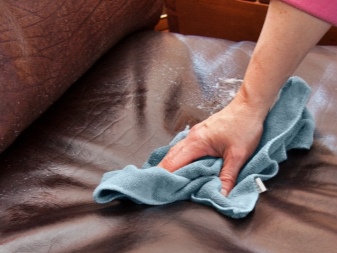
Wet
Wet cleaning should be chosen if the furniture is heavily soiled and you simply cannot do it with a vacuum cleaner. You will also need brushes, cleaning products, rags or sponges.
Let's see how to do this type of cleaning.
- The sofa is vacuumed (the exception is velvet and velor upholstered furniture).
- After wetting the sponge, stains and dirt are well rubbed.
- Detergent is applied (it is better to use a stiff brush for this).
- After the remedy has worked, remove it with a sponge.
- The final action is drying the sofa with a vacuum cleaner or a special machine.
You can see the technique for cleaning the sofa at home in the following video.
In addition, you can always use a steam cleaner.
- The upholstery is vacuumed and treated with a steam cleaner.
- Pour the selected detergent and distribute over the upholstery.
- Wait for the specified time and remove the detergent with a sponge.
- Vacuum cleaned and dried.
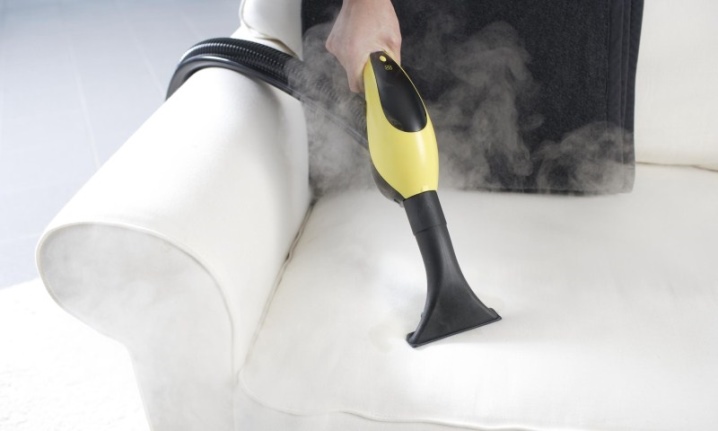
Removing covers for a sofa or chair will make your work even easier. Such products do not need to be dried artificially: in summer they can dry perfectly on the balcony, and in winter in a heated apartment. But they should not be exposed to direct sunlight.
We take into account the features of the fabric
When cleaning upholstered furniture, the type of fabric should always be taken into account. Otherwise, you can permanently ruin the material. It is worth taking a closer look at what experts say about different types of fabrics.
Velours
Velor is a soft, beautiful and incredibly pleasant to the touch fabric. However, it quickly collects dust and dirt. Vacuuming velor is not recommended, as this can lead to creases of the villi and subsequent thinning of the material, and bald spots may appear on it.
Dry cleaning of this fabric involves the use of a gentle powder or foam, which is applied to the velor sofa with a soft sponge and removed with a clean napkin. For wet cleaning, use liquid soap, baby soap, and water.

Flock
Flock upholstered furniture has already been appreciated by hundreds of pet owners, because this material perfectly resists traces and clues from sharp claws. However, the flock absorbs dirt in such a way that it almost sticks to the villi, making it difficult to remove stains.
Such sofas can be knocked out and vacuumed, there will be no harm to them, it is also recommended to use a wet stiff brush, which will effectively collect dust and hair. Wet cleaning involves the use of a soapy solution, which is then rinsed off, and the sofa is dried with dry napkins or microfiber.Do not use acetone, gasoline, chlorine-containing products, or scrape stains.

Tapestry
Tapestry is a strong, very durable material, but it can wear out over time and absorb many odors. In addition, such upholstery, with constant use, shines and becomes greasy, which looks unpleasant. The best thing here, of course, is to order a professional cleaning. But if there is no such possibility, Consider a few guidelines:
- clean furniture regularly with a vacuum cleaner or dry brush;
- do not use alkali-based products;
- for wet cleaning, apply only foam to the upholstery, not soapy liquid.
In addition, the tapestry in its structure has threads that can be dyed with not very high-quality dyes, as a result of which the pattern can "float" during the wet cleaning process. To avoid such a misfortune, choose the most inconspicuous place and rub it well with a damp, light-colored cloth. If colored spots appear on it, it is better to consult with professionals about cleaning and selection of products.
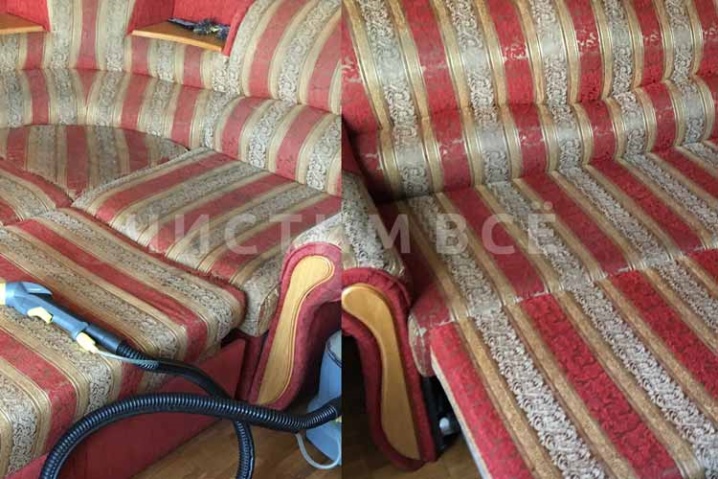
Alcantara
Soft, sophisticated, expensive fabric reminiscent of suede - it's all about Alcantara. Sofas made of this material look luxurious and effectively complement the interior of the house. In addition, the material has a special impregnation, so stains appear on it less often than on other fabrics. Nevertheless, nobody canceled caring for Alcantara.
If we talk about dry cleaning, then it will be enough to use a conventional vacuum cleaner with a soft nozzle. You can dissolve a little salt in water, wet the gauze and wrap the brush - this trick will make cleaning even more effective. Clean the upholstery strictly in one direction.
You can also use just soft, damp rags, which also need to be moved in one direction. Removable covers are washed in soapy water, but by hand. In no case should bleach and chlorine be used for cleaning. After washing, the covers are not wrung out, but they are dried without exposure to the sun.
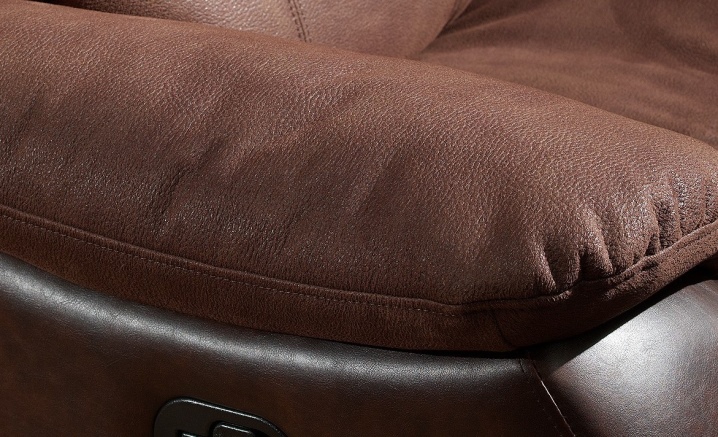
Velvet
This is a rather capricious material, on which any stains and dirt are perfectly visible. Outwardly, velvet is very similar to velor, the only difference is that its villi are shorter and it consists of natural fibers. To clean such upholstery at home, you need to take into account several rules:
- you cannot use stain removers: when trying to remove a separate stain, an outline will appear around it, which will look worse than the stain itself;
- if the contamination is strong, you can try to remove them with a weak solution of vinegar;
- dry cleaning is carried out with a brush of medium hardness, following strictly in the direction of the villi;
- velvet can be effectively cleaned with a steam cleaner.

Leather
Leather furniture looks chic, fashionable and stylish. But how it looks is completely up to you. To remove dust, fur, hair, you can use a soft damp cloth. Also, if there are small stains or greasy marks, a soap solution will help. It is not forbidden to use a vacuum cleaner from time to time. Stains from pens, felt-tip pens, drinks, varnish can be removed well with alcohol.
Important: Before starting wet cleaning, test by rubbing an inconspicuous area with a wet cloth. The fact is that there are types of skin for which contact with water is contraindicated.
If you ignore this question, the upholstery will darken and deteriorate, and nothing can be done about it. In the event that your sofa "reacted" in this way, it is better not to experiment and call specialists.
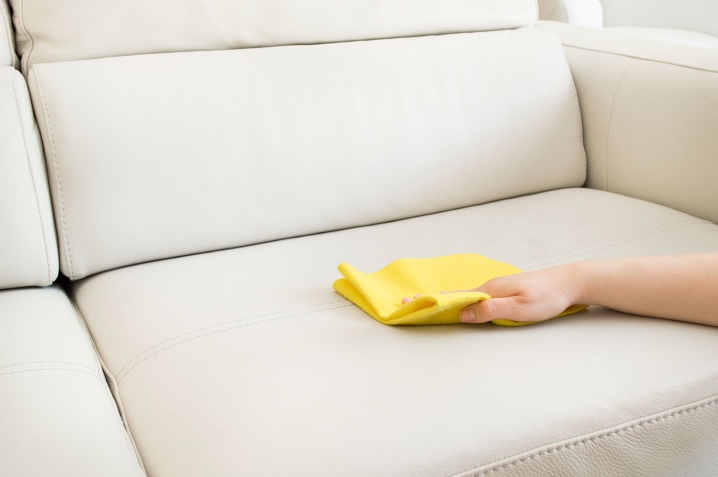
What dirt can be cleaned at home?
Fortunately, it's safe to say that today even at home it is quite possible to remove almost any stain. These include the following types of contamination:
- food: stains from milk, butter, sauce, cheese and other food;
- not containing fat: juices, wine, beer, water, berries and fruits, soft drinks and other drinks;
- proteinaceous: meat, blood, fish, eggs;
- stains from care products: creams, mousses, masks and other similar cosmetics.
However, it is worth remembering that when trying to remove a stain, the first step is to be guided by the type of upholstery. For example, perfume stains, which also have a strong odor, cannot be removed from some types of upholstery on their own, the same applies to urine stains.
Here are some additional tips:
- for furniture, you cannot use solid stain removers in the form of pencils and tablets, only liquid ones;
- always test on an inconspicuous area before using a cleaning agent;
- do not use hot water to clean meat, fish or blood stains;
- Grease stains can be dangerous: you can remove fresh stains yourself, but with old ones it is better to contact a cleaning company.
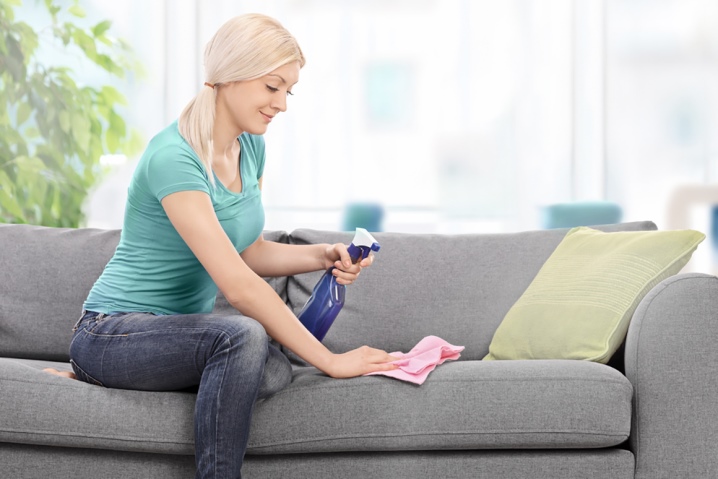
Necessary tools and stages of work at home
Cleaning the upholstery of upholstered furniture must follow a certain algorithm, then it will be possible to achieve high-quality cleaning.
Removing dust
This is the initial and easiest cleaning step. Hard surface sofas can be simply vacuumed, but softer tissues cleanse a little differently:
- Take a large piece of cloth and dampen it in water.
- Cover the furniture with it and go over it with a carpet beater.
- Remove the fabric.
Depending on the dirt, the fabric can be changed several times, while achieving complete disposal of dust. This method is good because the dust will not fly into the air, settling on surrounding objects and in your lungs.
Getting rid of solid dirt
If there is solid dirt on the surface of the sofa, it will become much softer after the initial cleaning. You can scrape off the softened dirt with a knife (the back of the blade), but this should be done very carefully, and then only with hard upholstery. It should be noted that contamination may not be wiped off immediately. Don't be discouraged, to speed up the process, you can use soapy water and a brush, or mix the peroxide with ammonia.
Important: for fluffy and soft tissues, only a soap solution and subsequent drying with napkins are suitable.
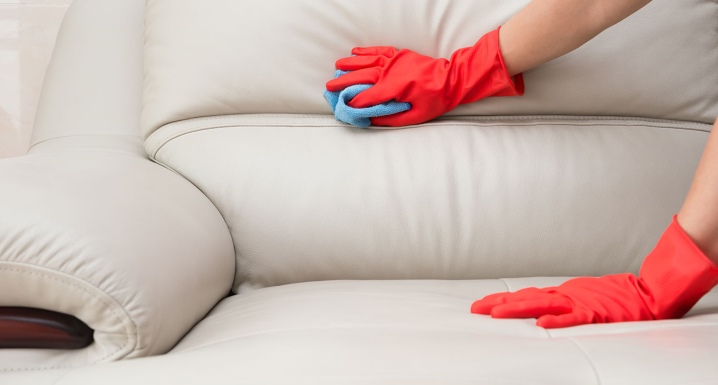
General cleaning
When the first two stages are passed, you can proceed to a more serious cleaning of the surface. It consists in applying a cleaning agent, waiting for it to work, and then cleaning it. The following types of funds can be applied.
- Foam. Convenient, beloved by many means. It removes dirt well, applies quickly, can be easily removed with a vacuum cleaner. Usually produced in the form of aerosol cans, it is not very economically consumed.
- Powders and liquids. There are several options you can use here. The first one is a means specially designed for furniture, which, of course, is better. The second is regular laundry detergent or dishwashing liquid. Do not forget that after that the furniture must be thoroughly washed with a damp cloth, otherwise there will be traces of the powder.
- Stain remover. This is a good product to help get rid of fresh and stubborn stains. But if the stain is difficult to remove, not every product is able to cope with it.
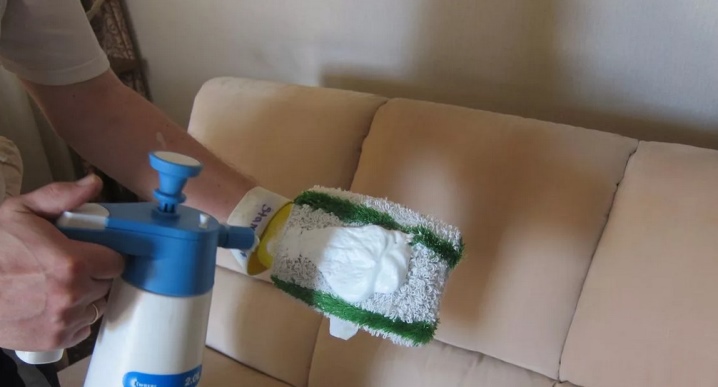
Alternatively, you can try do without chemistry. To do this, we will prepare the following composition:
- Dissolve seven tablespoons of vinegar in 500 g of warm water.
- Add a couple of tablespoons of baking soda and a small amount of dish soap.
The resulting product cleans stains well, but again remember that you need to first carry out the test on an inconspicuous area of furniture.
We remove spots
Before starting to remove the stain, you should clearly remember where it came from.
- Simple stains of dirt easy to clean with water and soap, the same goes for tea.
- Coffee stains can also be washed off with soap, but if the contamination is ingrained, a different method is used. In 7 parts of water, one part of the ammonia dissolves, and a little soap shavings are added there. This solution cleans up coffee well.
- To take away stains from juices and lemonades, in a glass of water you need to stir a spoonful of vinegar.
- Greasy, wine and berry stains easy to remove with baking soda. To do this, 1 part of soda is stirred in 3 parts of water, and after the mixture has dried, the furniture is vacuumed.
- If have been noticed wax stains then they can be removed with an iron. Place napkins or paper on the dirt, then iron them.
- Blood stains rinse off with extremely cold water.
If you don't remember exactly where the stain came from, we recommend that you use one of the following recipes.
- Lemon acid. Add a teaspoon of salt and the same amount of acid and dishwashing liquid to half a liter of water. The mixture is kept for 5 minutes.
- Aspirin. Pound a couple of tablets with a mortar, add a little water. To achieve the effect, half an hour is enough.
- Ammonia. We take regular shampoo, pour in a teaspoon of ammonia. It takes 20 minutes for the mixture to work.
- Stain remover or stain remover soap. If there is no opportunity or time to prepare the mixture, you can always use chemicals, the main thing is to be careful.
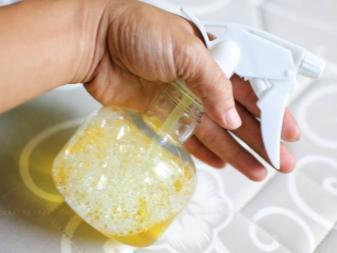
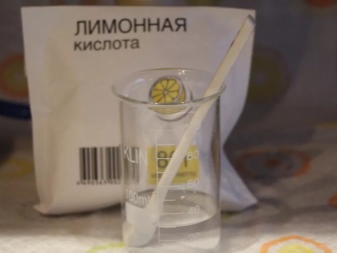
Recommendations after cleaning
The final stage of cleaning furniture is its drying. The best option is to hand dry. First, the sofa is well dabbed with dry napkins, then it can be dried with a hairdryer. Both a professional and a regular model will do. However, the hair dryer will need to be turned off from time to time to cool down as it will take some time to dry. The regime should not be the most powerful.
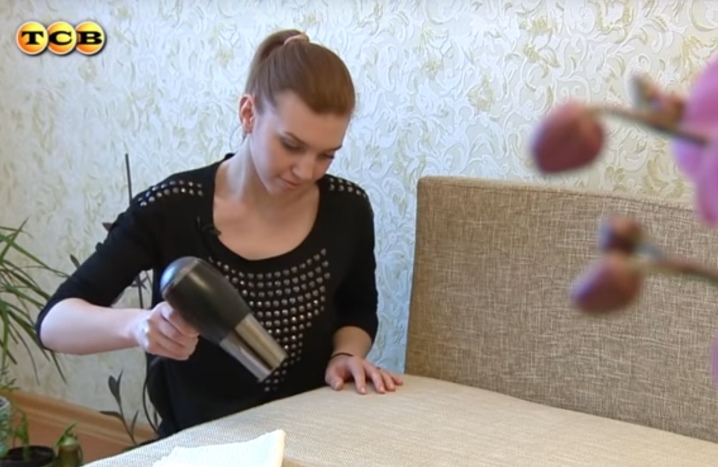
When the sofa is dry, it is vacuumed. This is how they deal with flock, leather, tapestry and other dense materials. Delicate fabrics cannot be vacuumed; they should be brushed along the pile with a soft brush to restore an attractive look. Never brush in a circle.
Difficult cases
Difficult cases include, first of all, "rare" spots, which are rare in everyday life. These are, for example, traces of gasoline, aggressive chemicals, tar and other similar substances. Regardless of the type of fabric, such stains cannot be removed on your own, it is most advisable to contact a specialist. The same advice can be given to those who have luxury, expensive furniture. If you do not know exactly what kind of stain it is, or if you are afraid of damaging the upholstery, it is better to call a professional. It will be cheaper than buying a new sofa anyway.
It is quite difficult to deduce and stains from urine, especially feline urine. The fact is that special substances are present in cat urine, and even when dry, the furniture will exude such a smell that it will become impossible to be in the room. Here you can try this algorithm of actions.
- If the cat has just made a puddle, blot it well with napkins, you can cover it with granules from the cat litter box (do not rub with wet rags, you will only spread the urine over a large area).
- When the stain dries, apply a solution of three parts water and one part vinegar.
- Once the vinegar is completely dry, cover the stain with baking soda. Important: the vinegar must dry completely, otherwise the reaction with soda will nullify your efforts.
- Apply hydrogen peroxide as soon as you add baking soda. To do this, take a spray bottle, pour a bottle of peroxide there, add half a teaspoon of dishwashing liquid, as well as 100 g of water. We put all this on soda, which should immediately foam.
- We leave the soda and peroxide for three hours, and then remove.
With baby urine, everything is much easier, and the smell from it is much less. Mix one part of water with the same amount of lemon juice and apply to the stain. You can also sprinkle the surface with baking soda and then vacuum.
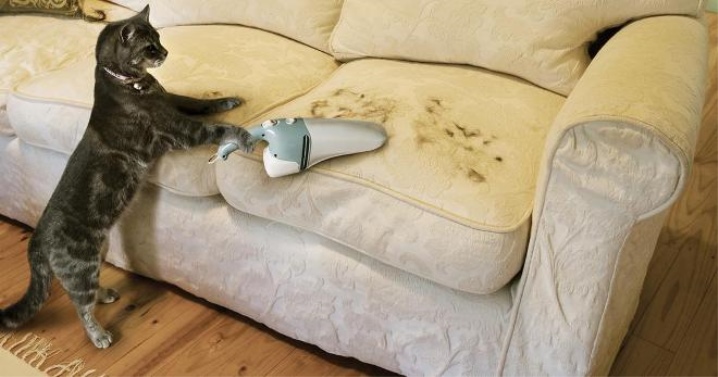
Precautions and safety
When removing any dirt, it is important to observe safety precautions. Let's take a look at a few key rules.
- Always wear rubber gloves to help keep skin irritation. In addition, it is recommended to wear a mask so that harmful substances do not get on the mucous membrane of the nose and mouth.
- Keep children and pets away when cleaning furniture, open windows while cleaning.
- Remember that sofas cannot be cleaned with too hot water, undiluted compounds, or aggressive substances. Any product is applied to the sponge, not to the furniture itself. Light-colored upholstery should be cleaned with white rags to avoid staining.
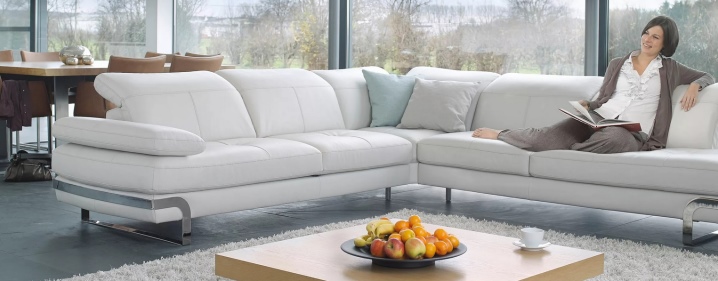
You will learn about the features of professional dry cleaning by watching the following video.













The comment was sent successfully.